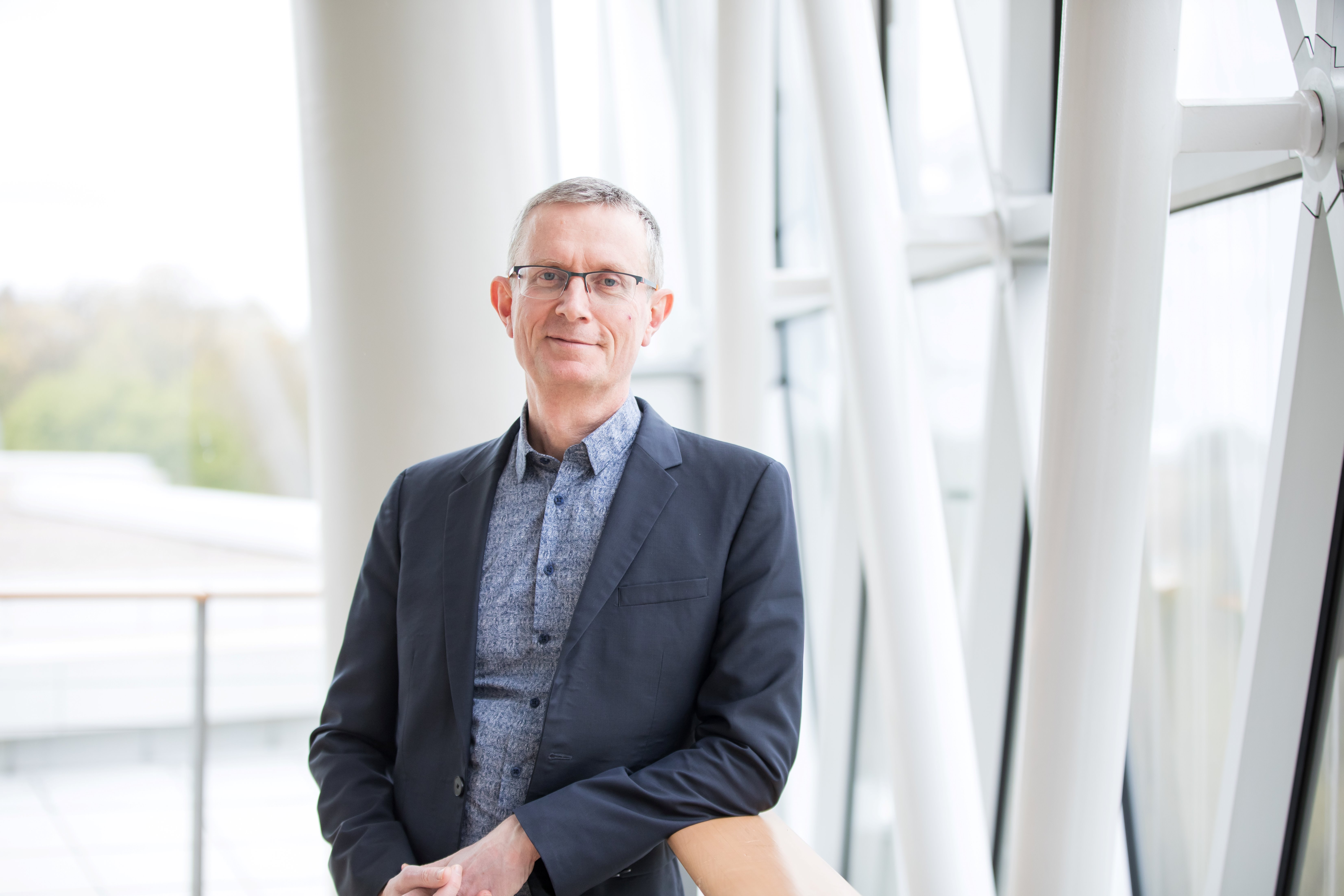The European Investment Bank is one of the world's leading lenders to ocean-linked projects. As the EU climate bank, it is stepping up its support and intends to use its investment to help curb threats to marine ecosystems and take advantage of the vast potential of blue economy solutions. We spoke to the EIB’s Senior Department Climate Advisor and Blue Economy Coordinator Franck Jesus.
Interview
The European Investment Bank plays a key role in sustainable development and environmental protection. What part does the promotion of a responsible blue economy have in this strategy?
The EIB became the EU climate bank in 2019, with strong determination to support the European Green Deal and the Paris Agreement. We committed to having at least 50% of our portfolio provide a substantial contribution to climate and environmental objectives by 2025 and beyond, while the EIB Group (the EIB and the European Investment Fund, or EIF) pledged to mobilise €1 trillion to that end by 2030. The EIB already dedicated 60% of its funding to these goals last year, surpassing its objective by investing slightly over €44 billion.
In May 2021, the European Commission published a new approach for a sustainable blue economy in the European Union, recognising the key role of the blue economy in delivering the European Green Deal and recovery plan. Similarly, the EIB’s Climate Bank Roadmap acknowledges the importance of the ocean and the need to develop additional investment on that front. It particularly emphasises the need to address threats to marine and coastal ecosystem, including plastic pollution. This ambition was further confirmed in 2022, when the Bank published the EIB Environment Framework, which focuses on environmental sustainability objectives, including the sustainable use and protection of water and marine resources. A good example of our commitment in this domain is the Clean Oceans Initiative, which the EIB launched in 2018 with German development bank KfW and French development agency Agence Française de Développement (AFD).
The EIB is a pioneer when it comes to investing in marine renewable energy. What innovations are you supporting in this sector?
In the European Union, there is massive potential for ocean energy to act as a cornerstone of the green transition. It plays a decisive role in targets for reducing greenhouse gas emissions and in the REPowerEU plan to reduce EU dependence on fossil fuels.
By 2040, offshore wind is expected to be the largest source of renewable energy in the European Union. At the EIB, we have supported the development of this industry since the beginning 20 years ago, when it was a nascent technology. To date, we have financed more than 34 project operations amounting to more than €10 billion of investment. Last year, we signed our first project in this domain in Poland. This is a landmark project as it opens up a new market for offshore wind and more opportunities to achieve renewable energy and decarbonisation targets.
We are also supporting the emerging development of floating offshore wind energy in Portugal and France, backing the roll out of a solution for deep-water regions where fixed bottom wind farms are not economically or technically feasible. So far, we have supported four projects demonstrating different technologies in the Atlantic and Mediterranean, offering valuable lessons learnt.
We are also looking at wave, tidal and ocean thermal energies, which still are in an early stage of development. In 2016, we supported a wave energy demonstration project and have been actively engaging in discussions with the sector. With time, and the support of committed EU Member States, we expect to see those technologies mature and their cost fall, allowing for wider deployment.
"In the European Union, there is massive potential for ocean energy to act as a cornerstone of the green transition"
Your second area of investment is sustainable ports and maritime transport. Where does the sustainability of European ports and fleets stand today?
Ports are a crucial piece of infrastructure for the greening of maritime transport operations - and more generally for the greening of transportation - because maritime transport is one of the most efficient transportation systems in terms of energy use.
As the activities of ports develop, there are sometimes tensions with the cities that host them, whether it be due to noise pollution or air and water pollution from fossil fuels used by port infrastructure or ships. Port authorities and cities in EU regions are trying to limit these negative impacts, promoting the use of cleaner fuels and less noisy engines, water quality management and the electrification of terminals.
Many ports are engaged in broadening their range of services to become innovation hubs for energy efficiency, the circular economy, carbon capture and storage, waste management or waste treatment. And because they lie at the heart of the supply chain, ports can have a key role in digitalisation for various modes of transport. This is why we see ports as a source of opportunities for both the green transition and economic development.
When the EIB looks at investment in this area, we require infrastructure to prioritise decarbonisation of the sector (facilitating zero direct CO2 emission operations at ports) and create hubs enhancing the multimodal nature of European transport. For instance, several years ago we invested in the Italian port of La Spezia to connect it to a low-carbon rail system. At the same time, we worked with the port authorities to increase energy efficiency and the performance of the maritime supply chain. In the same vein, we are also backing Port La Nouvelle in France, which aims to become a hub for construction and logistic activities supporting offshore floating wind farms. People traditionally see ports as old infrastructure, but they can play a decisive role in building a sustainable future.
"People traditionally see ports as old infrastructures, but they can play a decisive role in building a sustainable future"
What is your coastal zone protection investment strategy? The IPCC reports on this subject are alarming with massive erosion, rising sea levels...
One-third of the EU population live in coastal areas (within 50 km of the coast). That is more than 200 million people. However, these areas are indeed vulnerable to sea level rises and increasing storm surge risks, both of which are due to climate change. By 2050, 2,000 to 2,300 km2 of coastal areas could erode. And a recent European Climate Risk Assessment report from the European Environment Agency estimates that by the end of the century, the economic cost of coastal floods alone could exceed €1 trillion per year.
Concurrently, there is increasing evidence that the traditional ways of dealing with flood protection are not sufficient to protect the population and their activities. Nature-based measures need to come into play, because they are cost-effective, flexible, and come with potential co-benefits, like biodiversity habitat creation, drinking water provision, food production, carbon storage, recreation and tourism. Examples of such nature-based measures include beach dune systems, vegetation of sea walls or restoration of coastal wetlands. Greening EU coastal infrastructure and restoring marine and coastal ecosystems are among the European Union’s priorities. However, investment demand for projects of this kind is not yet strong enough. Since 2018, we have approved loans totalling around €500 000 for this type of project, a figure that pales in comparison to what we have provided for offshore wind and is simply insignificant in the face of the annual risk of €1 trillion (by the end of the century.) So we need more interest from regions and cities. We intend to improve interest in these projects with special communication efforts like the Adaptation Days we organised in April this year and are planning to run on a yearly basis.
"Greening EU coastal infrastructure and restoring marine and coastal ecosystems are among the European Union’s priorities"
With fresh water becoming increasingly scarce, some countries are moving towards greater use of desalination. Do you plan to invest more heavily to support this approach, considering it raises several environmental questions?
Desalination is indeed a tricky matter, notably because it has a high energy requirement. With climate change, some coastal areas will lack water, while also seeing demand increase as population migration trends lean towards the coasts. Some regions are already finding it difficult to access enough fresh water. So how do we see the desalination solution at the EIB?
The Bank can consider financing desalination if it increases water security in high water stress areas, but only as a last resort option. That means that the region, city or utility has already explored other alternatives such as water efficiency, wastewater reuse and network loss reduction. But importantly, we need to make sure this is done in a way that minimises greenhouse gas emissions, because this process is energy intensive. For instance, the project can link the desalination plant to the production of renewable energy. Another key consideration is the preservation of marine ecosystems. Once freshwater is produced, it is important to monitor how and where brine (saltier water) is released. We apply strict criteria. If those conditions are met, the EIB can consider supporting the project. Since 2019, we have provided just over €300 million in loans for this kind of project. In short, we believe that desalination can make sense as an adaptation investment as recognised by the EU taxonomy, but we must make sure that the solution does not create more environmental problems and increase CO2 emissions.
This raises the more general question of financing criteria. What principles does the EIB follow in this respect?
In 2017, the EIB co-founded the Sustainable Blue Economy Finance Principles with the European Commission, the Worldwide Fund for Nature (WWF) and the World Research Institute (WRI). This was the first global framework to guide public and private financing in the ocean economy. Keeping true to these principles, we apply our sustainability-related standards to all blue economy investments. These standards ensure that what we finance is aligned with the goals and principles of the EU taxonomy, the Paris Agreement and the UN Sustainable Development Goals. In 2022, we began to systematically track the investment we make in supporting a sustainable global economy. The figures reveal that the EIB provides more financing for the development of a sustainable blue economy than any other international financial institution.
One concrete example of how we apply these principles is the desalination solution I mentioned earlier. Aquaculture is another domain where we want to make sure that our investments avoid negative environmental impacts such as water pollution or escapees. Above all, we seek positive impact. Of the €2.5 billion we invested in sustainable blue economy operations last year, 88% not only avoided a negative impact on the environment, but also made a substantial contribution to either climate action or environmental sustainability objectives.
"The EIB provides more financing for the development of a sustainable blue economy than any other international financial institution"
How does the EIB measure the social, economic and environmental impact of its investments in the blue economy?
The EIB applies its Additionality and Impact Measurement Framework (AIM) to all of its operations.
First, we ensure that our operations target situations where investment is suboptimal. There are investment gaps resulting from what we call market failures, such as environmental destruction or pollution and difficulties in accessing financing. We want to bridge these investment gaps, bringing social or environmental benefits that would not be possible to the same extent without EIB intervention.
Second, when we look at operations, we rate them according to several factors, such as economic rate of return, social benefits, the employment generated, and environmental and governance impact. We have impact indicators that apply to all projects, like greenhouse gas emissions and employment. Others are more sector specific, such as renewable energy capacity installed, volume of wastewater treated to acceptable standards, and number of people benefiting from reduced exposure to floods, for instance in coastal areas. Where possible, the economic assessment of our operations calculates a monetary value for these impacts (this can be done for greenhouse gas emissions and air pollution, for example). Otherwise, we use qualitative information.
"Of the €2.5 billion we invested in sustainable blue economy operations last year, 88% made a substantial contribution to either climate action or environmental sustainability objectives"
"At the EIB, we understand that there is no viable Earth without a healthy Ocean. This is why we are committed to supporting the development of a sustainable blue economy. 2023 showed our largest lending volume to that end so far, and we are ready to partner with those who want to help us go even further."
Kyriacos KAKOURIS
Vice-President of the EIB
"At the EIB, we understand that there is no viable Earth without a healthy Ocean. This is why we are committed to supporting the development of a sustainable blue economy. 2023 showed our largest lending volume to that end so far, and we are ready to partner with those who want to help us go even further."
Kyriacos KAKOURIS
Vice-President of the EIB
You strongly support research related to the blue economy. What promising avenues are you funding?
Since 2019, we have invested €366 million in research, development, innovation and education supporting a sustainable blue economy. This budget helped us back various projects. For instance, we have invested in research vessels to improve our knowledge of what lies deep under the sea. Interestingly, we know more about the surface of the Moon and Mars than we know about the depths of the oceans! We also support innovative technologies such as XOcean, which has developed a fleet of uncrewed surface vessels to collect ocean data. This benefits the offshore wind sector and marine science. The EIB Institute — which promotes research and education — has also financed research funds via its STAREBEI programme, including the protection of coastal regions in the Swedish region of Skagen.
Beyond the EIB support, is the overall investment up to the challenge?
Clearly, the answer is no. One of the UN Sustainable Development Goals (SDG 14) is dedicated to the ocean, and the need for that goal is estimated at $175 billion per year. However, current annual investment stands at less than $10 billion. Yet the oceans play a key economic role. 90% of trade takes place via the sea. It provides growth opportunities, employment, food and more. In a 2016 report, the Organisation for Economic Co-operation and Development (OECD) estimated that ocean-related activities have the potential to outperform the growth of the global economy. We do not pay enough attention to the ocean. Economically speaking, it is a huge opportunity; environmentally speaking, it is a must. The oceans provide us with ecosystemic services that are essential to human life. Without a healthy ocean, life on Earth would become extremely hard.
What are the EIB's priorities for blue finance in the future? Should we expect an increase in its ambitions and commitment in this area?
Of course, the EIB will continue supporting the development of a sustainable blue economy. Our blue portfolio is growing. Last year, we invested €2.5 billion, which is more than in previous years.
To continue on this path, we are developing partnerships with several institutions. For instance, we recently launched the Blue Mediterranean Partnership, which is dedicated to helping the southern neighbouring countries on the Mediterranean Sea develop sustainable blue economy projects. This partnership will start operating this year with initial identification of projects to be funded. Last September, we launched a call to deliver positive action for the ocean with eight other public development banks. We aim to develop a blue public finance roadmap and present it at the UN Ocean Conference set to take place next year in Nice, France. For us this is just the beginning, because we see a pressing need to invest in our oceans.
"We see a pressing need to invest in our oceans. Economically speaking, it is a huge opportunity; environmentally speaking, it is a must"
The EIB Institute supports youth in blue economy
The EIB Institute aims to promote and support initiatives focusing on youth engagement, mastering life skills and strengthening impact.
"Supporting youth in blue economy is investing in the future of our societies; by nurturing their talents and empowering them to engage in ocean-related activities, we pave the way for economic growth, environmental stewardship, and social progress”, says Shiva Dustdar, director and head of the EIB Institute.
This is why the EIB Institute is exploring strategic partnerships in blue economy literacy, employment & entrepreneurship, providing a unique opportunity for young people to contribute their creativity, innovation, and skills.
“Let us recognise that the waves of change are carried by the energy of our youth, and together, we can chart a course toward a prosperous and resilient future for all” continues Dustdar.
Shiva Dustdar
Director and head of the EIB Institute
To be read also in the dossier "For a sustainable blue economy":






